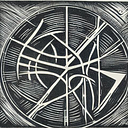"Oddly enough, a lot of MWI proponents stop here as if they just made a great argument, but it obviously makes no sense. We do not see both detectors going off 100% of the time. We only see a single detector go off, and if we repeat the experiment many times, we find the probability distribution exactly matches the 50–50 split predicted by the Born rule. Clearly, we need the Born rule to make correct predictions!"
I initially stopped when I got to this passage, because it seemed like you either misunderstood MWI's argument or just weren't willing to engage with it on fair terms. Later I went back and saw that in the ensuing paragraph you kind of admit that this is a strawman, and you begin to address the real argument. But you invent a new sort of strawman in the next section on "self-location", arguing against methods that no one is proposing:
"Consider, for example, an imperfect beam splitter that has a ~33% chance of reflecting the photon and a ~67% chance of allowing it to pass through. There are two possible outcomes. If you assign each “branch” of this multiverse equivalent probabilities, then you get the wrong answer. Clearly, this simple self-location cannot work."
You are assuming that two possible observed outcomes of a system = 2 branches, and thus any system with two observable outcomes should have a 50-50 chance for either outcome. The two possible outcomes are more like sets containing an indeterminate number of branches in both, and the total number of branches has no relationship to the binary conditions of your beam splitter. In simpler terms, if I'm the version of myself that sees the photon pass through the splitter, there's no reason to assume I'm the only version of myself seeing the photon pass through the splitter.
Assigning a "self-location" is inherently subjective, but with your 1/3 and 2/3 probability splitter, no one would suggest calling it 50-50 on the basis of the number of possible outcomes. Having already studied the splitter, you would make the judgement that 1/3 of the branches reflect the photon and 2/3 let it pass through, and you would make your guess accordingly.
That being said, I think you make a fair case that MWI is a theoretical complication that is unprovable and thus superfluous. I just don't think you make a very convincing argument that it makes no sense or is fundamentally untrue.
